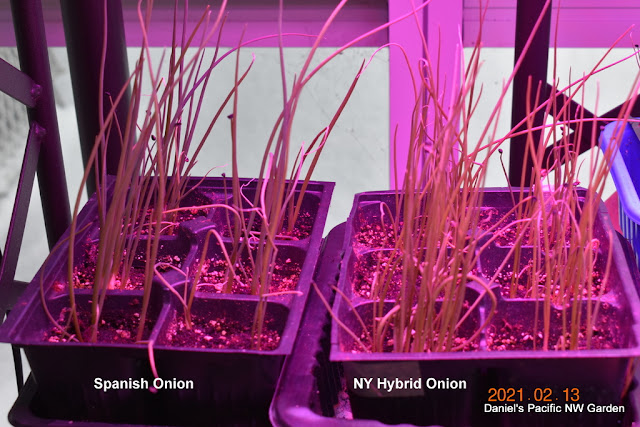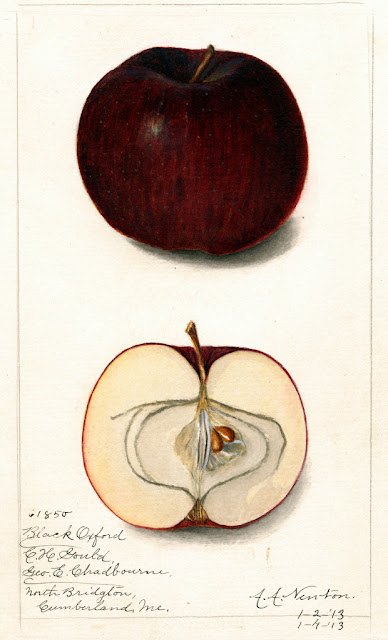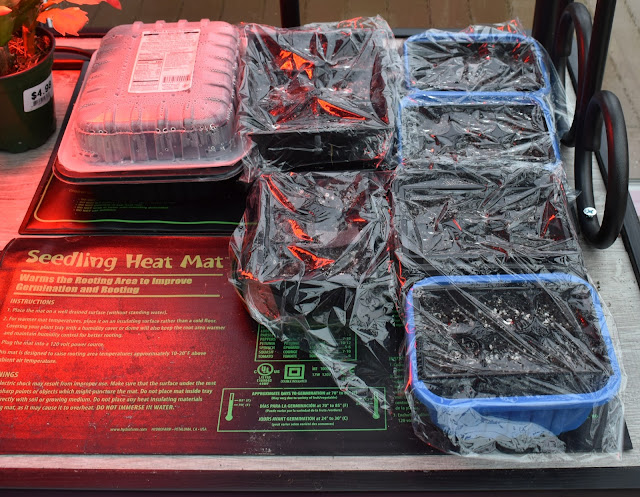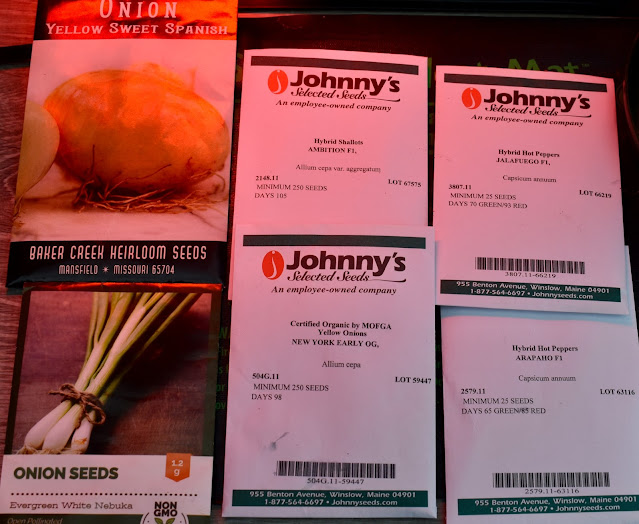I decided to label my apple varieties as to when they ripen. I usually can't remember. If I add a tag, then I can look at that. I haven't decided on what the tag will say yet, maybe month + week so, for example, if they ripen in Mid Aug, the tag will say A2-3 or something.
The dates and summaries (such as "late summer") depend on so many factors, they are not etched in stone. In any region, there will be warmer and cooler pockets, different elevations, and effects of large bodies of water, or not. In any given year, there are warmer and cooler years, some more sunny, some with more or less rain. How many warm days in a given summer may be an effect, as well as how long the summer days are - longer, but cooler, in the Northwest compared, for example to the Southeast. Still, a super early apple such as Gravenstein ripens in Aug, and a super late apple like GoldRush ripens in Nov or so.
Sources will be listed below. I decided to group the apple varieties fairly broadly, and base on as local a list as I could. But also with info from other sites, because many are not listed in a particular book or site. The dates after the apple cultivar name are the date that cultivar was created, discovered, or introduced, according to the various sources.
[Edit - I originally had Winter Banana, a late apple, here. Porter was my intent, it's early.]
Late Summer
Akane [1930s in Japan]- Aug - Mid Sept (Y), Early- Mid Sept (MK)
Gravenstein [1600s] - late Aug (J), Summer (Y), Early Sept (MK)
Porter [ca 1800] - Aug (South)-Sept(N England) (J), Late Summer (Burford)
Pristine [1974] - Summer (B), Aug 25-30 (S), Early - Mid Aug (MK)
Zestar [1990s] - Late Aug (Y), Aug 10-20 (S)
Fall
Airlie Red Flesh [before 1960] - Sept - Oct (J), Fall (B)
Fameuse [1700s in Quebec]- Sept (Y)
Honeycrisp [1960] - Aug 30-Sept 15 (S), mid Sept - Early Oct (MK)
Jonagold [1968] - Oct 5-15 (M), Sept-Oct (RJ), Fall (B), Mid Sept to late Oct (Y), Late Sept to early Oct (MK), Sept 10-15 (S).
Jonathan [1790s] - Early Oct (M), Sept-Oct (J), Fall (B), Mid Sept to Mid Oct (Y), Sept 10-15 (S).
Liberty [1955] - Oct 10-20 (M), Mid Fall (B), Oct (Y), Sept 10-15 (S), Early-mid Oct (MK)
Prima [1967] - Early - mid Sept (MK)
Priscilla - [1961] Early Fall (B)
Rubinette - [1964] Last half of Sept ( ) , Early Oct (Y)
Sutton Beauty [1757] - Fall (B)
Sweet Sixteen [1973] - Sept 19-27 (M), Sept (J), Fall (B), Mid Sept (Y) Aug 30-Sept 15 (S)
Winecrisp [1990] - Sept 30-Oct 10 (S)

Late Fall
Baldwin [1740] - Oct (J), Late Fall (B), Late Sept - Nov (Y)
Black Oxford [1790] - Early November, long keeper (J), Late Fall (B)
GoldRush [1972] - Nov & keeps very well (J), Fall (B), Oct-Nov (Y), Oct 20-25 (S)
Keepsake [1978] - Oct 10-12 (M), Oct & keeps well (J), Late Fall (B), Mid Sept-Mid Oct (Y), Sept 10-15 (S).
King David [1893] - Late Fall (B), Oct (Y)
Macoun [1909] - Sept-Oct (J), Late Fall (B), Late Sept-Oct (Y), Sept 10-15 (S)
Opalescent [1880] - Late Fall (B)
Winter Banana [1876] - Oct, keep to Dec (J), Late Sept - Oct (Y)
Sources
B = Tom Burford. "Apples of North America" ( I think East Coast)
J = Rowan Jacobsen, "Apples of Uncommon Character" (I think East Coast)
M= Manhart. "Apples for the 21st Century." W. Washington and W. Oregon resource.
MK = Moulton and King, Fruit Handbook for Western Washington. WSU Mt Vernon Northwestern WA Research and Extension Center.
S = Stark Brother's Nursery, on line information (Missouri)
Y = Roger Yepson. "Apples" (Possibly NY State? I'm not sure)
Looking at this list, this is a lot of varieties! I must be crazy! However, each year I obtain some scion and graft to existing trees, so each tree is a multigraft. Some have a half dozen varieties. Most of the varieties are on 8 dwarf or semidwarf, multigrafted trees. That does not include the new minigrafts, espaliers, and columnar trees that will be much smaller. Also not included, because they are such new varieties, are the Cosmic Crisp, or the red flesh, Redlove apples, Calypso, Era, and Odysso. The list also misses SummerRed, Grenadine, Prima,
Since it's boring to look at an all-text entry, I included some of the USDA Pomological Watercolors for most of the historic cultivars. Most have been cultivated from 1700s to early 1900s, with the watercolors mostly being in the first three decades of the 20th century. Required statement: "Use of the images in the U.S. Department of Agriculture Pomological
Watercolor Collection is not restricted, but a statement of attribution
is required. Please use the following attribution statement: "U.S.
Department of Agriculture Pomological Watercolor Collection. Rare and
Special Collections, National Agricultural Library, Beltsville, MD
20705" The abbreviated years are for the 20th century - ie, 1913, not 2013.




























